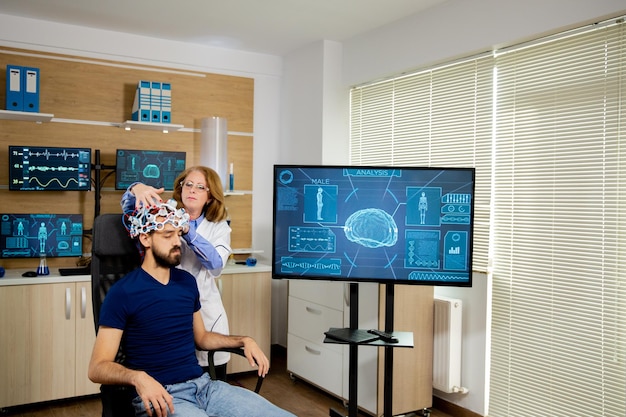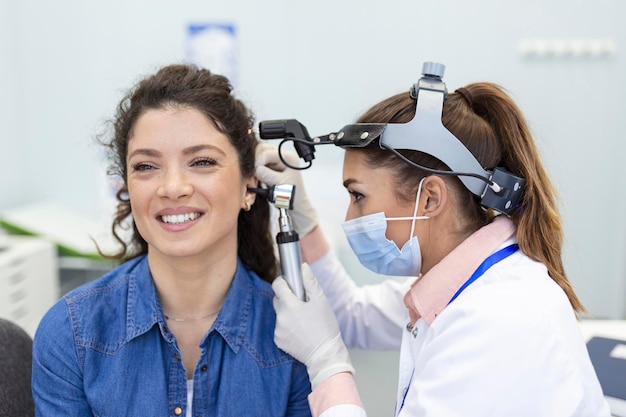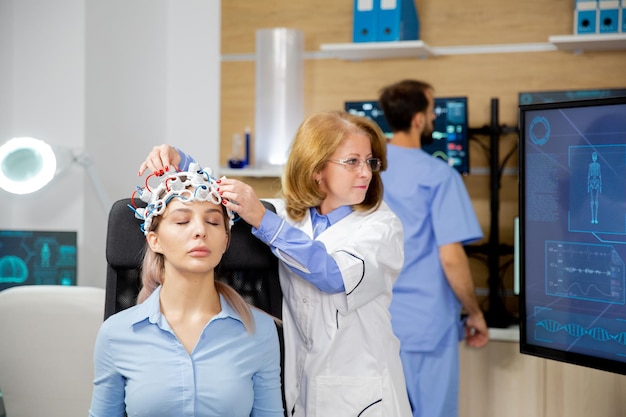A groundbreaking new brainwave test is transforming the way scientists approach early detection of Alzheimer’s disease. Known as Fastball EEG, this innovative screening method takes just three minutes to administer and could identify subtle signs of memory impairment long before traditional symptoms emerge.
Developed by a team of neuroscientists and biomedical engineers, Fastball EEG offers a non-invasive, cost-effective, and highly accessible way to monitor brain health—potentially revolutionizing early intervention strategies for one of the most challenging neurodegenerative conditions of our time.
The Fastball EEG test leverages electroencephalography (EEG), a well-established technique that measures electrical activity in the brain using small sensors placed on the scalp. What sets Fastball EEG apart is its unique stimulation protocol.
During the test, participants view a rapid sequence of familiar and novel images—such as faces, objects, or landscapes—flashed on a screen at a rate of about one per second. The brain’s response to recognizing familiar items generates a distinct neural signature known as the "P300" wave, which appears roughly 300 milliseconds after the stimulus.
In individuals with early memory impairment, this P300 response is delayed or diminished. Fastball EEG detects these subtle changes with high sensitivity, offering a window into cognitive function that traditional memory tests might miss.

A participant undergoing the Fastball EEG test, with sensors monitoring brain responses to visual stimuli.
Alzheimer’s disease can begin altering the brain decades before memory loss becomes noticeable. By the time symptoms appear, significant neuronal damage has often already occurred, making treatment less effective.
Early detection is crucial. It allows individuals and families to plan ahead, access support services, and potentially benefit from emerging therapies designed to slow disease progression. With Fastball EEG, clinicians may be able to identify at-risk individuals during routine check-ups, much like cholesterol or blood pressure screenings.
Current diagnostic tools for Alzheimer’s include cognitive assessments, brain imaging (like MRI or PET scans), and cerebrospinal fluid analysis. While effective, these methods are often expensive, time-consuming, or invasive.
Fastball EEG stands out for several reasons:
One of the most promising aspects of Fastball EEG is its potential for integration into routine healthcare. Because it’s fast and easy to administer, it could become a standard part of annual wellness visits for adults over 50—especially those with a family history of dementia.
Researchers envision a future where primary care providers use the test to monitor cognitive health over time, tracking changes in brainwave patterns that may signal early decline. This longitudinal approach could enable personalized risk assessment and timely referrals to specialists.

A clinician discusses Fastball EEG results with a patient during a routine check-up.
While the results so far are promising, Fastball EEG is still in the research and validation phase. Larger, diverse clinical trials are needed to confirm its accuracy across different populations and to establish standardized interpretation guidelines.
Another challenge is ensuring that early detection leads to meaningful outcomes. Identifying risk is only the first step—effective treatments and support systems must follow. However, with several disease-modifying therapies now in development, the timing for early screening tools like Fastball EEG has never been better.
The development of Fastball EEG represents a significant leap forward in the fight against Alzheimer’s disease. By making early detection faster, simpler, and more accessible, it empowers both patients and healthcare providers with critical information when it matters most.
As research continues and technology evolves, tools like Fastball EEG could become cornerstones of preventive neurology—ushering in a new era where brain health is monitored proactively, just like heart health or vision.
With further validation and integration into clinical practice, this three-minute test may one day help millions around the world gain more time, better care, and greater control over their cognitive futures.

Health

Health

Health

Health

Health

Health

Health

Wellness

Health

Fitness

Health

Health